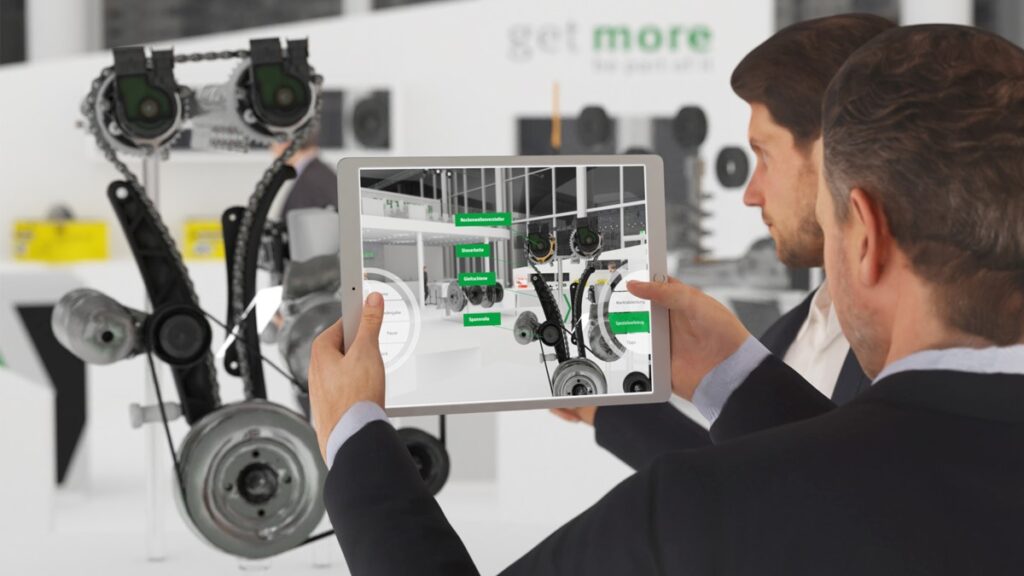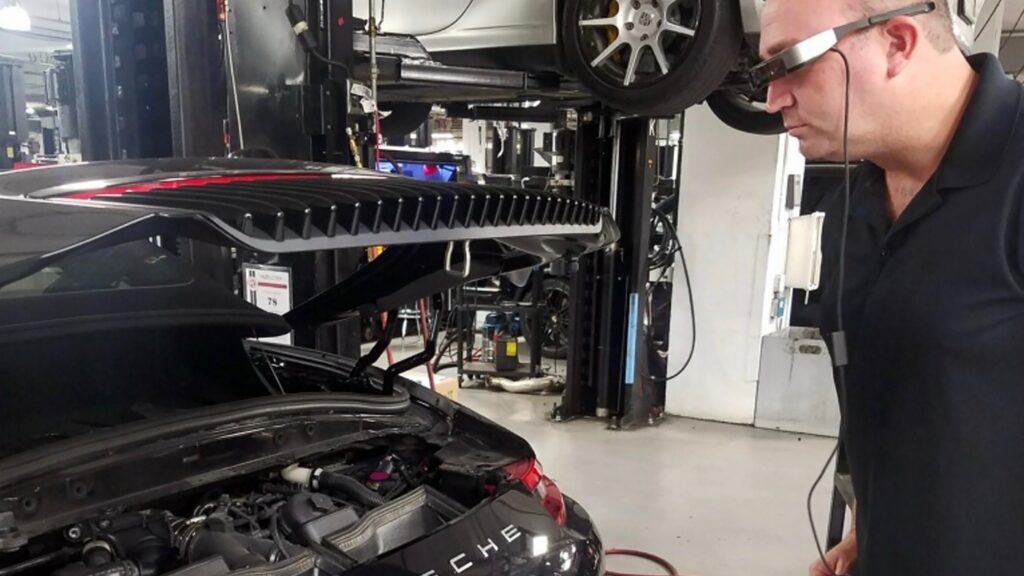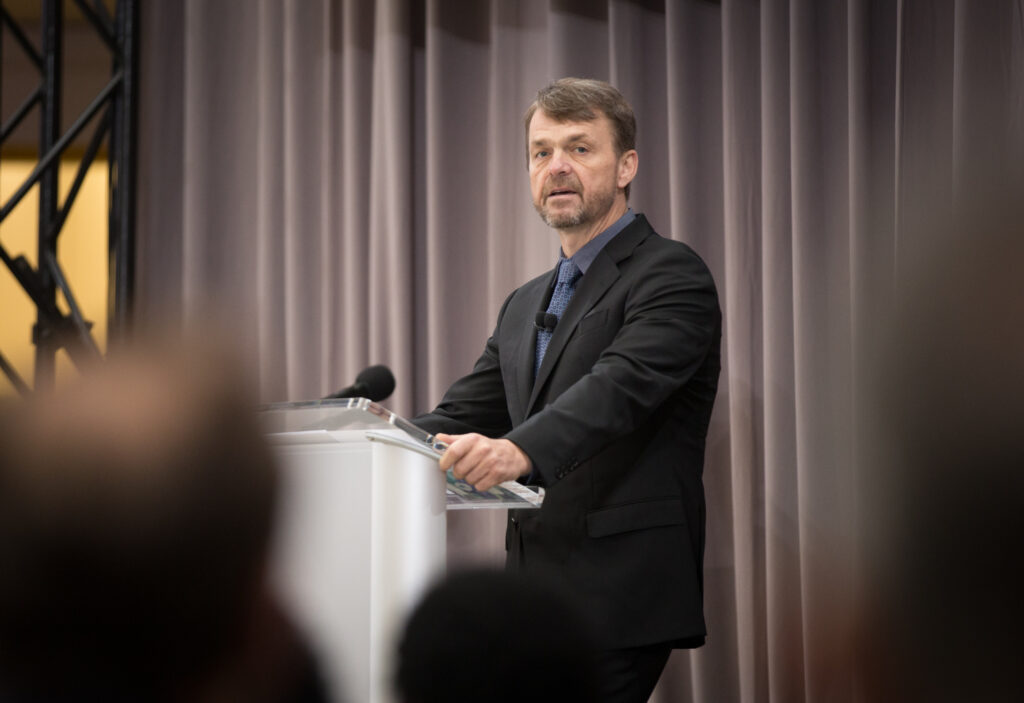Augmented reality could expedite servicing and training
- PostedPublished 1 December 2018
Being able to quickly identify, diagnose and resolve problems is vital for workshops so they can promptly fix the vehicle in question – helping cut downtime and maximise profit.
One modern way to alleviate the oft-problematic and time-consuming fault identification and disassembly process is through the use of augmented reality – an approach that has now been comprehensively trialled by Porsche.

In late 2017, it introduced a trial of its ‘Tech Live Look’ support system. Technicians using the system would don a pair of ‘smart’ glasses, featuring projectors, cameras, microphones and LEDs for illumination; a connection would then be made to a remote Porsche technical support team who could observe what the technician was seeing in real time.
Besides being able to talk the technician through the issue, the support team could also highlight components on the embedded display within the glasses or quickly transmit technical bulletins – allowing the technician to easily fix the problem. Porsche claimed the system cut the service resolution time by up to 40 per cent, based on the result of a pilot scheme at eight US dealers.

As a result, in May 2018, Porsche announced plans to have all of its US outlets using the technology by the end of 2019. The president and CEO of Porsche Cars North America, Klaus Zellmer, said: “Tech Live Look is the kind of digital innovation Porsche values because it raises the quality of the customer experience. By solving issues faster, our dealer partners can get their customers back into cars with less disruption.”
Industrial giant Schaeffler, at the recent Automechanika show in Frankfurt, demonstrated a similar “mixed reality” support system (pictured above). It could overlay an expert’s instructions and visual guides on the assembly in question, allowing for the clear display of instructions such as tightening directions and torques. As a result, the technician working on the car need not down tools and can quickly carry out the job at hand.
The use of such high-tech systems isn’t restricted to automotive applications, though. TAFE SA, South Australia’s largest vocational training and education provider, has developed a trial virtual reality training set-up for students studying heating, ventilation and refrigeration systems.

The VR courses, which were produced by Adelaide-based company Lateral Vision, allow students to experience different work site and system simulations. Lecturer Shannon Baldok said: “These headsets will give students the opportunity to learn about them and identify safety risks and hazards in the safety of a classroom learning environment.
“Students will be able to have access to plant equipment and areas that we currently cannot take them due to restrictions around safety and ease of access.”
If the concept proves successful, then TAFE SA aims to have headsets for an entire class by the end of 2018.
It’s not just the process of identifying, diagnosing and replacing parts that is modernising – so is the process of acquiring the parts themselves; in September 2018, the online retail service Amazon extended its Australian market offerings to include a range of automotive products.
- CategoriesIn SightGlass
- TagsSightGlass News Issue 15, technicians, technology, Training

